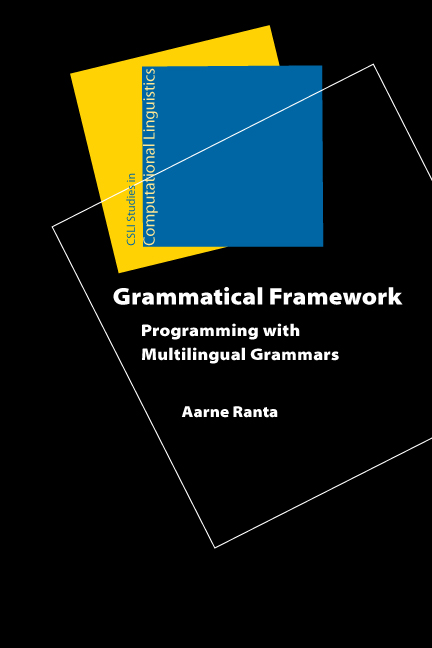

|
|
|
|

Grammatical FrameworkProgramming with Multilingual Grammars Grammatical Framework is a programming language designed for writing grammars, which has the capability of addressing several languages in parallel. This thorough introduction demonstrates how to write grammars in Grammatical Framework and use them in applications such as tourist phrasebooks, spoken dialogue systems, and natural language interfaces. The examples and exercises presented here address several languages, and the readers are shown how to look at their own languages from the computational perspective. is professor of computer science at the University of Gothenburg, Sweden. He is the acting coordinator of the European Union research project MOLTO (Multilingual On-Line Translation), which develops techniques for high-quality translation among fifteen languages. Translated into Chinese.Contents
April 2011 ISBN (Paperback): 9781575866260
|
Distributed by the
University of Chicago Press |
|
pubs @ csli.stanford.edu
|
CSLI Publications
Stanford University Cordura Hall 210 Panama Street Stanford, CA 94305-4101 (650) 723-1839 |